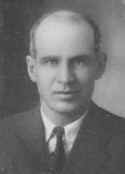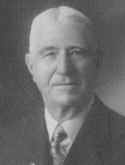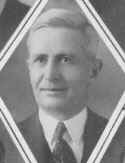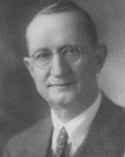| Sharon | |||
Sharon's Yesterdays & Tomorrow An Outline of the Growth of Sharon and its Industries.... and a History of the McDowell National Bank, June 1935
|
|||
|
|
History of the McDowell National Bank
The scope of the bank’s influence extends
throughout Mercer County, Pennsylvania, and into parts of Trumbull and
Mahoning Counties in Eastern Ohio. In no period of financial stress has the
McDowell National Bank failed to meet every demand made upon it. This
bank’s business has continued without interruption, except for the
“Bank Holiday” declared by President Franklin D. Roosevelt, when he
entered office on March 4, 1933. Along with all other banks in the United
States, the McDowell National Bank was closed. On March 15, 1933, a
license was issued to the McDowell National Bank to resume business on an
unrestricted basis. The present depression had its inception in the
stock market panic of 1929. It was due, at least in part to reckless
finance and unwise investment on the part of city bankers. The usual
aftermath of war also contributed to the depression which has followed
quite closely the characteristics of the panic that began in 1873. Until August 1, 1931, there had been nothing
unusual about banking conditions in the Sharon District except as
reflected from widespread bank failures in various other parts of the
country. The failures were caused primarily by the fact
that too many banks had been chartered. There were in 1920, 30,000 banks
which, with branches, made a bank for every 2800 people in the United
States, or one for every 600 families. One Western State had a bank for
every 780 people in the State. It was not surprising that many banks
failed. In Cleveland and Detroit widespread establishment of branch banks
brought failures. The great wave of speculation, which culminated
in 1929, and the aftermath, had brought about a failure of values which
led to the great wave of bank failures during 1931, 1932 and 1933. In August, 1931, these failures stuck near home
when a bank in Warren, O., failed, followed by failures in Orangeville,
Toledo. Alliance and Canton, all in Ohio. And, on October 15, 1931, three
banks in Youngstown, O., did not open. There were many failures in the
Pittsburgh District, including the large Bank of Pittsburgh. N A. A great deal of Sharon money had been attracted
to Youngstown by excessively high rates of interest paid for deposits.
Some banks in Youngstown offered 5 per cent, and building and loan
companies paid 5 1/2 per cent. When people in the Sharon District found that
they would not get their money in Youngstown, or in some other nearby
cities and towns, it natural
that they should make careful inquiry at home. They found the McDowell
National Bank ready to pay, and between August, 1931, and March, 1933,
this bank paid out more than $1,300,000.00. The McDowell National Bank met
all demands until noon on March 4, 1933, although the “Bank Holiday”
had begun at 10 A.M. of that day by a proclamation of the Governor of
Pennsylvania. On Sunday night, March 5, 1933, at 10 o’clock,
President Franklin D. Roosevelt made his famous radio announcement to the
country, in which he pointed out the financial difficulties of the moment
and declared a national moratorium, closing all banks of the United
States. It was not pointed out then, and no one has laid
much stress upon the fact since, that the Federal Reserve Banks were
primarily responsible for the closing of banks on March 5, 1933. A “gold
rush” had started and the Federal Reserve Banks had been stripped of the
supply of gold required to support the circulating notes outstanding at
the time. Under the then existing law, and under
circumstances surrounding the gold supply, no bank in the United States
was able to get its reserves from the Federal Reserve Banks. It was,
therefore, absolutely necessary that all banks be closed whether or not
they were solvent. It seems necessary to point to this fact,
because, due to a lack of proper information, the banks of the United
States have come in for a great deal of adverse criticism. Some of this
criticism they, no doubt, deserve, but not to the extent and in the
general terms used. The McDowell National Bank would have had plenty
of money with which to meet the demands then present, and in immediate
prospect, had the bank been able to get its reserves from the Federal
Reserve Bank. Having met the acid test of 1933 and having
reopened at the end of the “Bank Holiday”. without restrictions of any
kind, it was natural that old and many new depositors should turn to the
McDowell National Bank. From March 4. 1933, to March 4, 1935, deposits
have increased more than $702,000.00. |
Henry Forker Jr.
P. C. Gibbons
S. M. Phillips
S. H. Hadley
Photos of Current Directors of the McDowell National Bank, 1935
Photos of Past Directors of the McDowell National Bank
Photos of the employees of the McDowell National Bank, 1935
|
|




